It wasn’t until her mid-twenties that Beyza Özler became interested in her Turkish heritage. It began with the psychedelic sounds of Turkey’s music of the ‘60s and ‘70s and continued its route all the way to Kaş, where Beyza moved with her then six month old daughter in 2012. It was here that she saw Turkish kilims for the first time and fell in love unequivocally. Years later, her shop in Prenzlauer Berg is like a visual encyclopedia of Kilim culture; an ontologically female almost mystic energy embedded in its symbolic language and rich colors. Over cups of Turkish tea and coffee, Beyza unraveled her vast knowledge and the story of her journey from Berlin all the way to the fields of Antalya, where her kilims soak up the abundance of pure sun and air.
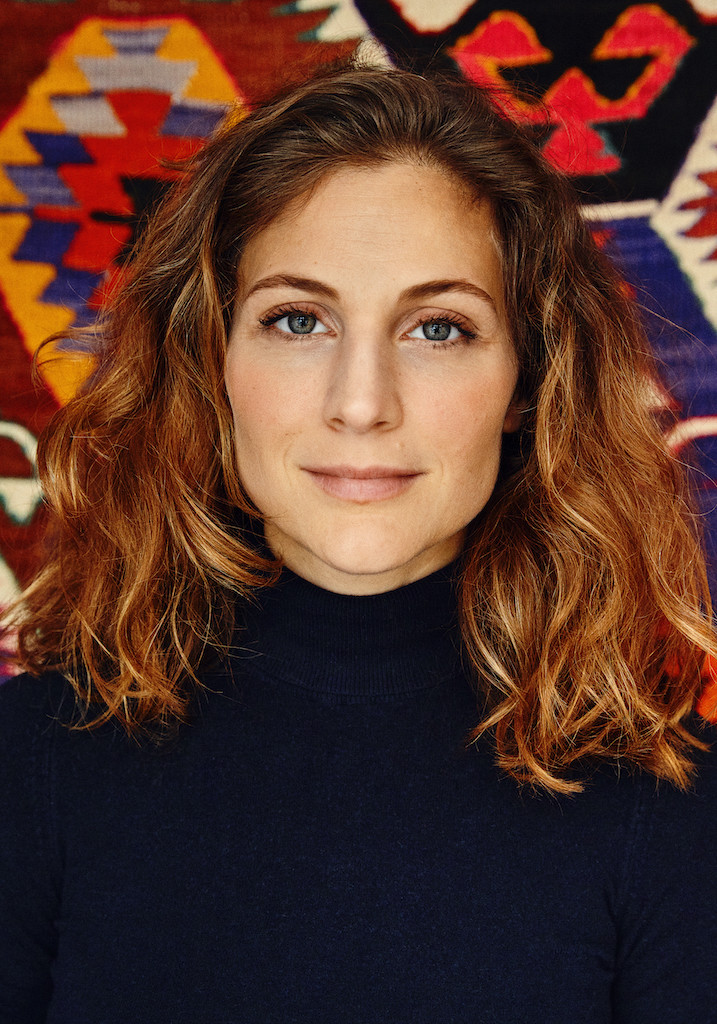
How did you discover kilims?
When I became a mother, I decided that if I didn’t get to know Turkish language and culture better, I would have nothing to teach my daughter. I first began with a second degree in Turkology and after only one semester, I was immersed in the subject and regained my Turkish language skills. I was also deeply inspired by the depth and diversity of Turkish culture, to a point where I had to discover it on my own.
So I travelled to Turkey with my daughter. My first spot was Kaş, because a friend, who I had met in India during a yoga teacher training, lived there. And then I stayed, for two years. It was completely different to be among people who shared my Turkish background, I noticed how beneficial this was for me. It was good for me to discover that heritage is in your blood, in your DNA, and that you can't deny it. And then I discovered kilims.
I had rented an apartment with a large roof terrace and wanted to buy something, a carpet, maybe a few pillows. So, I went to a shop with a really cool carpet dealer and it was there that I consciously saw kilims for the first time. Before that I only knew these old knotted oriental carpets, and they never really spoke to me. But when I saw the kilims, I still remember vividly, it was like a shock, a very intrinsic experience that made me feel very connected. I was fascinated.
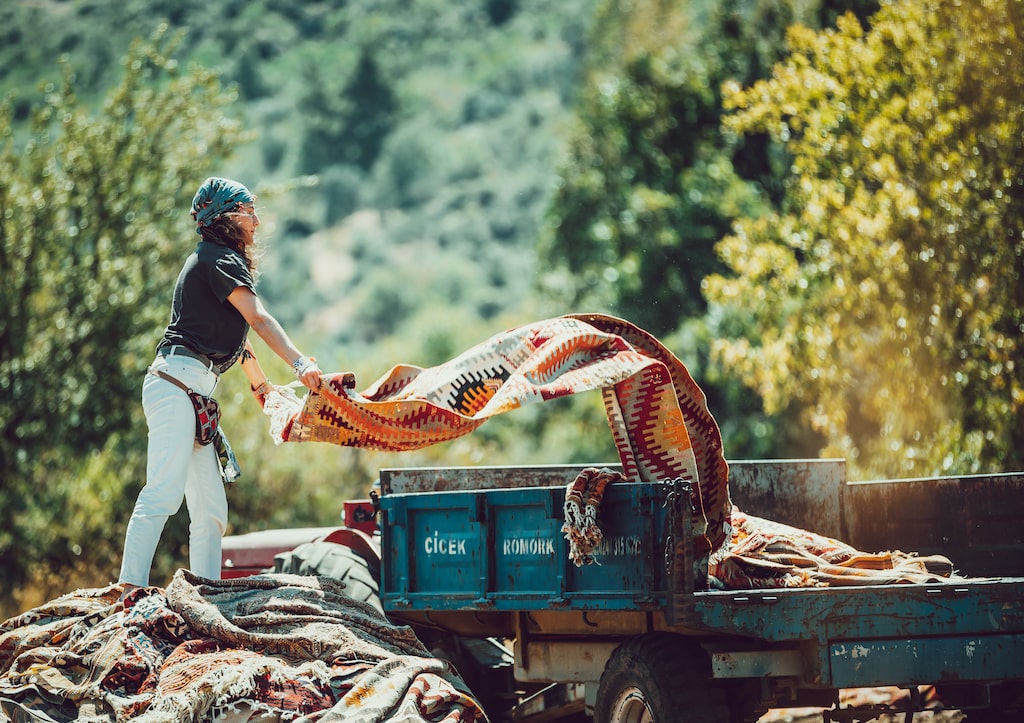
You turned your fascination for kilims into a business. Tell us more about that.
I always worked with textiles from an early age, my parents had a fashion boutique, my father has a fashion production facility in Istanbul, and I studied textile economics. I've always been fascinated by fabrics, but I didn't want to work in fashion anymore, it was too fast-paced and superficial and not sustainable enough for me. And then when I saw kilims, wow, that was something completely different; the connection with my own culture and craft, the symbolism with a mystical essence. I was completely enthralled.
In the beginning I didn't have a concept, I didn't say, “ok, I'm going to be a carpet dealer now.” It developed very naturally. It started with me buying kilims for myself and decorating my apartment. Then, when my friends came to visit, they really wanted to take some kilims home as well. That’s when I thought, ok, let me try to take some kilims and pillows to Berlin. I bought some from the dealer in Kaş and quickly realized that it worked really well and that I enjoyed selling them.
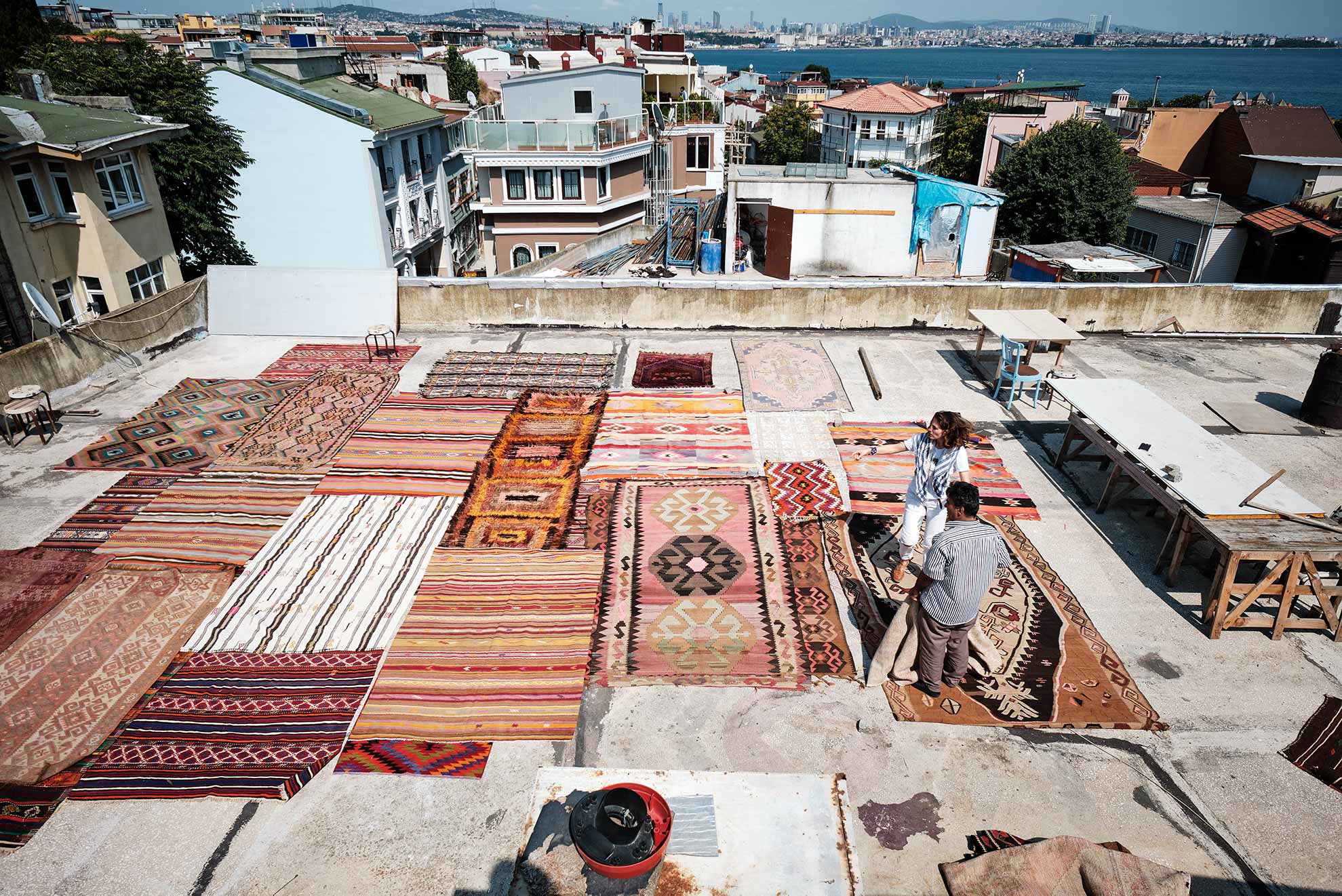
So, how do the kilims from Turkey travel to your shop now?
I’m a perfectionist and I don’t do things halfway. I probably make it a lot more complicated for myself because I want to control everything from beginning to end. That’s why I don’t just buy something somewhere and bring it directly back to my store and that’s it. I have different places where I buy the kilims, either from dealers, directly from families, or from people who have built up a collection over the years and are looking for buyers. I never get anything delivered to my shop that I don't know about, every single piece is approved by me, and every single piece is cleaned and restored by us, and that’s why I can always guarantee the quality.
After the purchase the kilims are first stored in Istanbul, in our depot in Sultanahmet. They stay there until early summer and are then sent to Antalya. After being cleaned and washed, the kilims are placed on fields under the open sky, directly in the sun for about three months, depending on the kilim. They are turned several times, the dust is removed and then they are sent back to Istanbul where they are restored. So, it’s a long process that I’ve built up over the years. I was lucky from the beginning that I found the right people to work with.
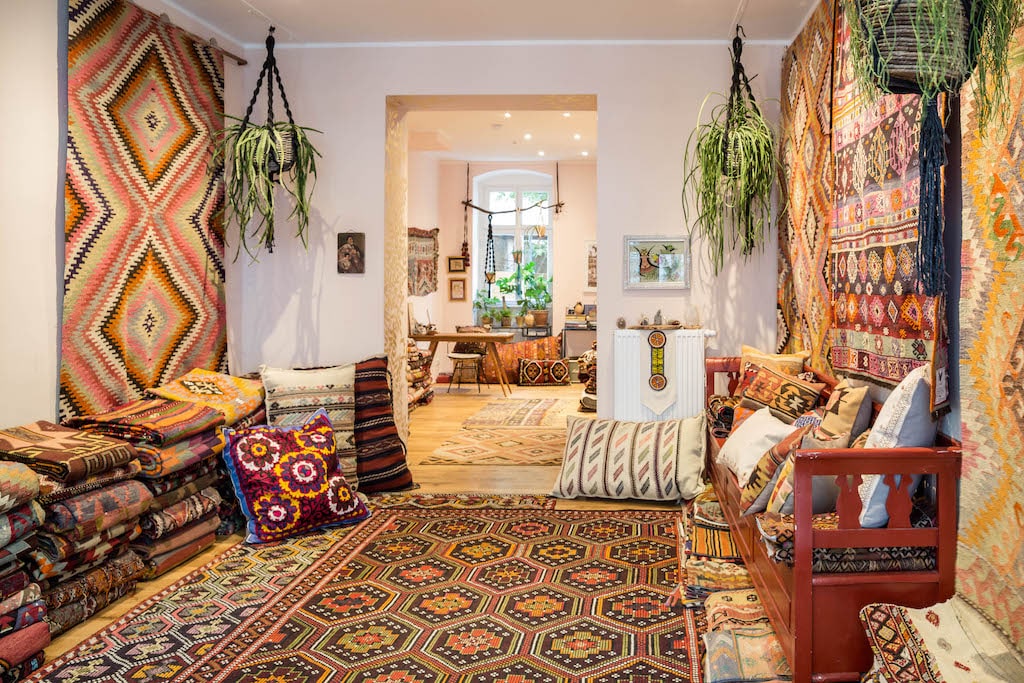
You said that the fashion industry wasn't sustainable enough for you. How do kilims promote the idea of sustainability?
Kilims are the most sustainable thing one can buy. The old kilims already exist, they were woven 60-70 years ago. Of course, you have to put in some energy and labour to restore them, but it’s minimal compared to creating a completely new product. We also try to work with the most natural methods. The sun, for example, is the most powerful detergent. The kilims are first washed with soap and water, and then they are placed on large kilim fields. And they're not just lying there to dry, because they're dry in a few hours, you don't have to put them in the sun for three months. But they lie there because the sun disinfects them through the heat and through the light, and then you don’t have bacteria or moths, plus odours are removed because of the abundance of fresh air. The sun also removes stains that weren’t removed during the wash, fruit or vegetable stains, for example, are faded by the sun. And that's why we work with the sun, it doesn't cost anything and it’s the most natural thing there is, you don't pollute the environment.
I like to think that kilims are interior furnishings with a soul. So not something off the rack or from Ikea, but something that you bring into your home which possesses love that flowed into it, first from the weaver and then also from us. I always make sure that the right people are involved in the whole process. Because all of us do it with love, and you can feel it.
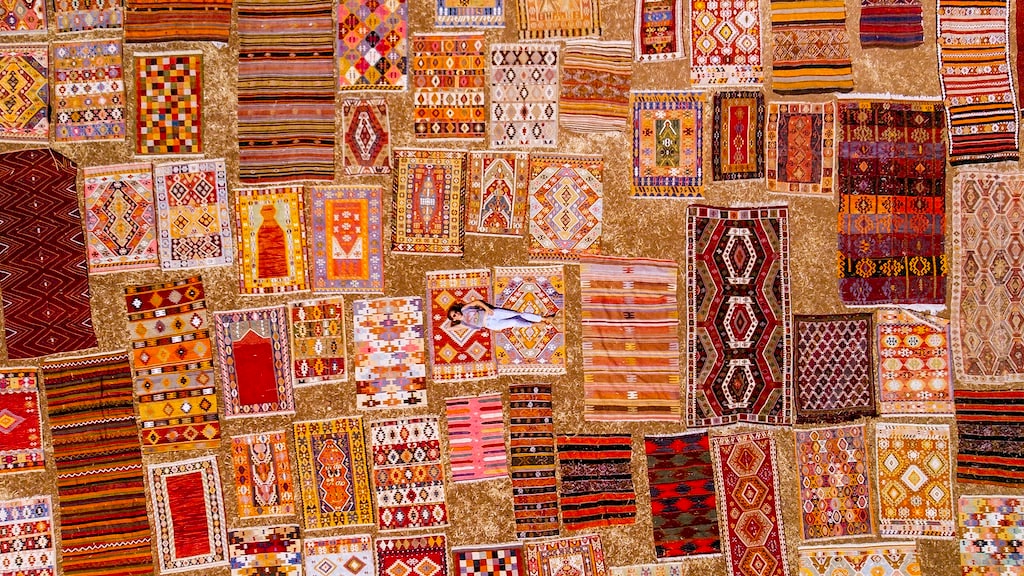
Read More:
- Launching a Business During a Pandemic: A Conversation With NOBLE&STYLE’s Founder
- Juan Danilo on shamanic influences and his culinary vision for the world
Words: Feride Yalav-Heckeroth
Photos: Wild Heart Free Soul
Last Updated on March 16, 2024 by Editorial Team
Feride, a seasoned traveller with a deep passion for exploration, brings a unique perspective to her writing. She skillfully captures the essence of diverse destinations. Among her works, she has authored several guides, such as "Secrets of Istanbul," showcasing her expertise.










